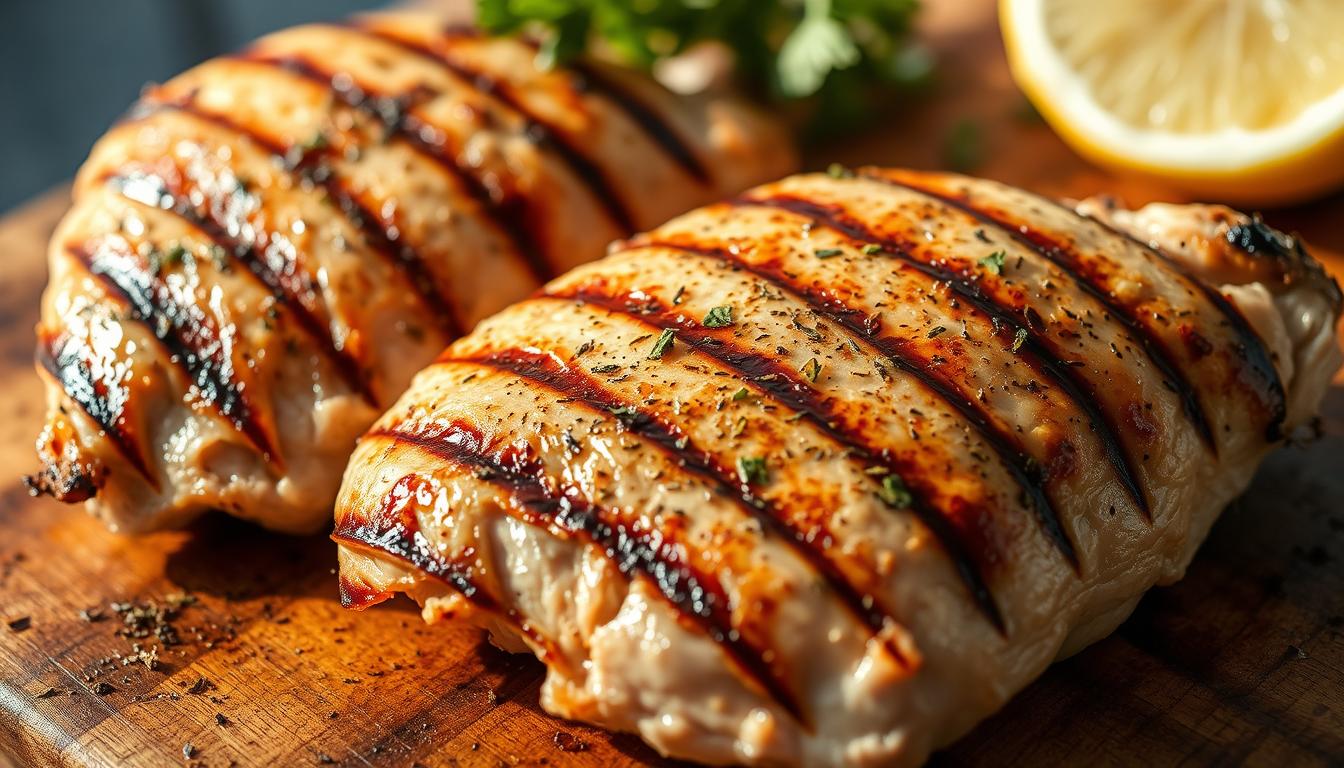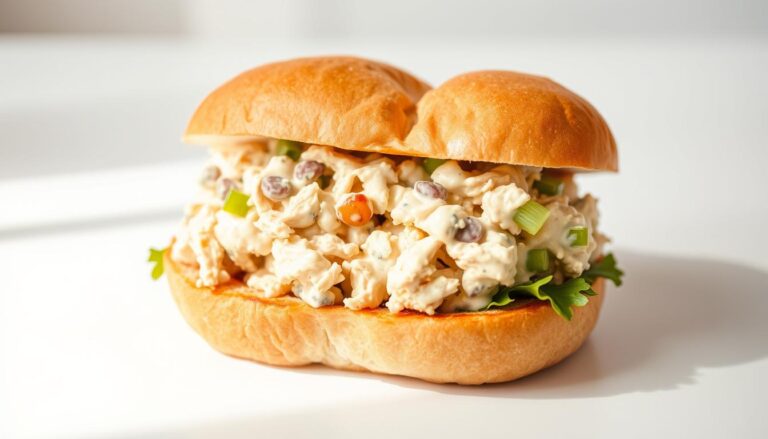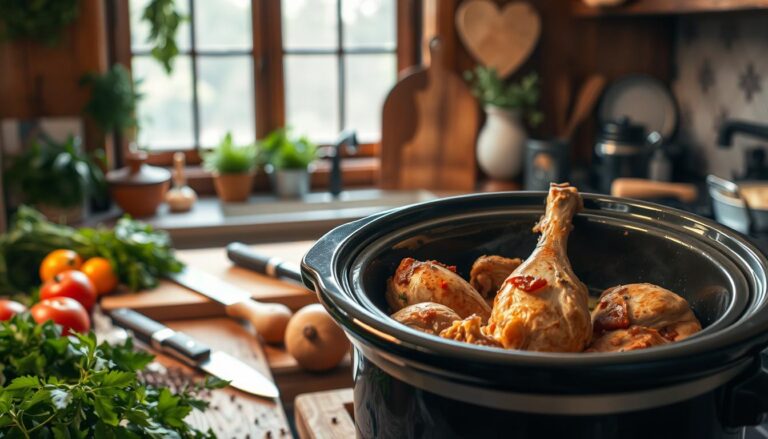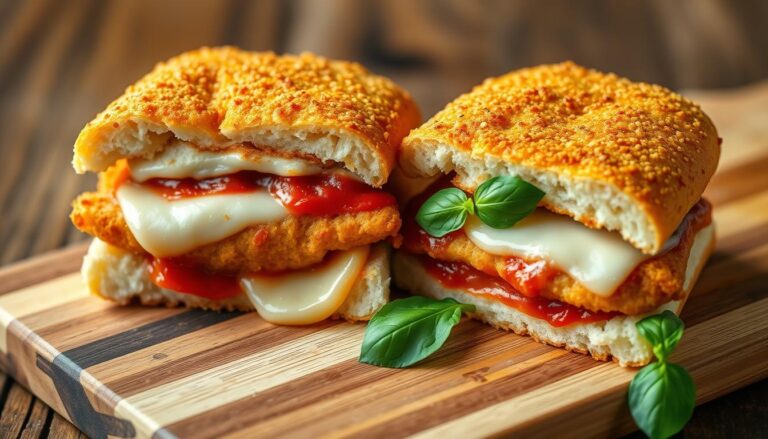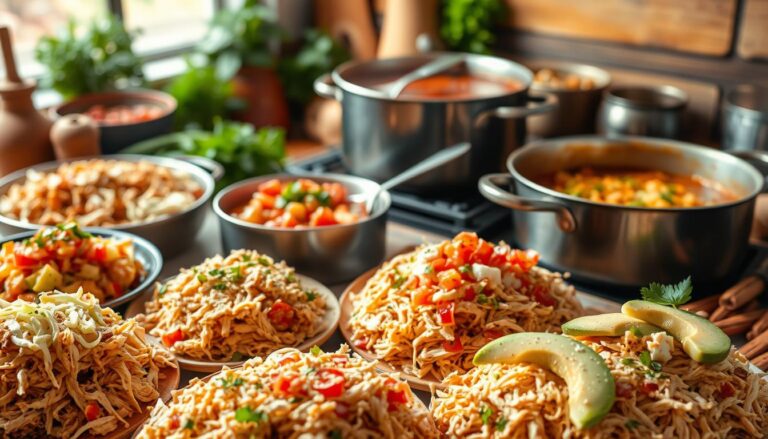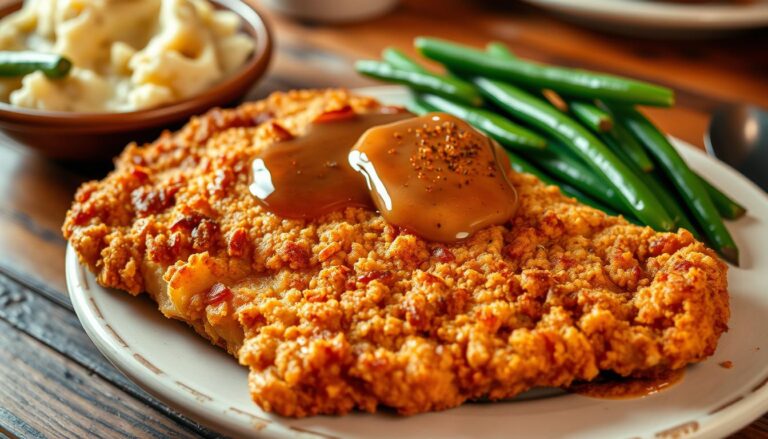Perfectly Grilled Chicken Breast: A Classic Recipe
A perfectly cooked grilled chicken breast is a staple in many cuisines, offering a delicious and healthy meal option. Achieving that perfect grill can be a challenge, but with the right techniques, anyone can become a grill master.
The art of grilling chicken breast to perfection involves more than just throwing it on the grill. It requires an understanding of cooking techniques, including marinating, seasoning, and timing. With these skills, you can create a variety of grilled chicken recipes that are sure to impress.
Key Takeaways
- Understanding the basics of grilling is crucial for perfect results.
- Marinating and seasoning are key steps in preparing delicious grilled chicken.
- Timing is everything when it comes to grilling chicken breast.
- Experimenting with different flavors can elevate your grilled chicken recipes.
- Practice makes perfect; don’t be discouraged by initial attempts.
The Art of Grilling Chicken Breast
The art of grilling chicken breast involves more than just throwing it on the grill. It requires a combination of the right techniques, quality ingredients, and attention to detail to achieve that perfect balance of juiciness and flavor.
Why Chicken Breast is a Grilling Favorite
Chicken breast is a popular choice for grilling due to its lean protein content and versatility in absorbing flavors. It’s a favorite among grill enthusiasts because it cooks relatively quickly and can be paired with a wide range of marinades and seasonings. According to a survey, nearly 60% of households in the United States grill chicken breast at least once a month.
| Reasons for Popularity | Description |
|---|---|
| Lean Protein | Chicken breast is preferred for its low fat content. |
| Versatility | It can be seasoned in numerous ways, making it adaptable to various cuisines. |
| Quick Cooking | Chicken breast cooks faster than many other cuts of meat. |
What Makes a Perfect Grilled Chicken
A perfect grilled chicken breast is characterized by its juicy interior and flavorful exterior. Achieving this involves proper marination, precise temperature control, and not overcooking the chicken. As celebrity chef Bobby Flay once said, “The key to a great grilled chicken is in the marinade and the heat control.”
“The key to a great grilled chicken is in the marinade and the heat control.” – Bobby Flay
To achieve perfection, it’s essential to monitor the grill temperature and ensure the chicken is cooked to the right internal temperature. A well-grilled chicken breast should be both visually appealing and succulent.
Essential Equipment for Perfect Grilled Chicken
The key to perfectly grilled chicken lies in understanding and utilizing the right grilling equipment. To achieve that perfect grilled chicken breast, it’s essential to have the right tools and understand their advantages.
Grill Types and Their Advantages
There are several types of grills available, each with its unique advantages. Gas grills offer convenience and easy temperature control, making them ideal for beginners. Charcoal grills provide a smoky flavor that many grill enthusiasts love. Electric grills are perfect for those with limited outdoor space, and pellet grills offer a versatile grilling experience with precise temperature control.
Must-Have Grilling Tools
In addition to a good grill, there are several essential grilling tools that can enhance your grilling experience. A grill brush is necessary for cleaning the grill grates. Tongs and spatulas are crucial for handling chicken breasts during grilling. A meat thermometer ensures that your chicken is cooked to a safe internal temperature.
Temperature Monitoring Devices
Temperature monitoring devices are vital for achieving perfectly grilled chicken. A digital meat thermometer allows for precise monitoring of the chicken’s internal temperature, ensuring it’s cooked to perfection without overcooking.
Selecting the Best Chicken Breasts
When it comes to grilling, the type of chicken breast you choose can make all the difference. The quality of the chicken breast affects not only the taste but also the texture and overall grilling experience. To get the best results, it’s essential to consider several factors when selecting chicken breasts.
Fresh vs. Frozen Chicken
The debate between fresh and frozen chicken often centers on taste and convenience. Fresh chicken is typically preferred for its superior taste and texture. However, frozen chicken can be just as good if thawed properly. The key is to check the packaging date and the condition of the chicken.
Organic and Free-Range Options
Organic and free-range chicken is raised without antibiotics and has more space to move, potentially leading to better flavor. While these options are more expensive, they offer a more natural and humane choice for consumers.
Size and Thickness Considerations
The size and thickness of the chicken breast are crucial for even cooking. Thicker breasts may require adjusted cooking times. A uniform size ensures that all breasts are cooked to perfection simultaneously. Here’s a quick comparison:
| Size | Cooking Time | Best For |
|---|---|---|
| Thin Breasts | Less Time | Quick Meals |
| Thick Breasts | More Time | Special Occasions |
Preparing Your Chicken Breasts
Before you throw your chicken breasts on the grill, there are a few preparation steps you shouldn’t skip. Proper preparation can make all the difference between a dry, flavorless piece of chicken and a juicy, mouth-watering delight.
Trimming and Tenderizing Techniques
Start by trimming any excess fat from the chicken breasts. This not only helps in achieving a cleaner presentation but also prevents flare-ups on the grill. Tenderizing is another crucial step; you can use a meat mallet to pound the chicken to an even thickness, ensuring it cooks uniformly.
Brining Methods for Juicier Chicken
Brining involves soaking the chicken in a saltwater solution before grilling. This technique enhances the moisture content of the chicken, making it juicier and more flavorful. You can customize your brine with various herbs and spices to add extra layers of flavor.
Butterflying for Even Cooking
Butterflying your chicken breasts is another effective technique for achieving even cooking. By cutting the chicken in a way that allows it to lie flat, you ensure that it cooks consistently throughout. This method is particularly useful for thicker chicken breasts.
Classic Grilled Chicken Breast Recipe
Mastering the art of grilling chicken breast can start with a simple, classic recipe that yields impressive results. This recipe is designed to be straightforward and easy to follow, ensuring that you achieve a perfectly grilled chicken breast every time.
Ingredient List
The ingredients for this classic grilled chicken breast recipe are simple and readily available. You will need:
- 4 boneless, skinless chicken breasts
- 2 tbsp olive oil
- 1 tsp salt
- 1 tsp pepper
- 1 tsp garlic powder
- 1 tsp paprika
- Optional: your choice of herbs (e.g., thyme, rosemary)
Preparation Time and Cooking Time
Preparation time for this recipe is approximately 15 minutes, and the cooking time is about 20-25 minutes, depending on the thickness of your chicken breasts and the grill temperature.
Nutritional Information
Here’s a breakdown of the nutritional information for this grilled chicken breast recipe:
| Nutrient | Per Serving |
|---|---|
| Calories | 260 |
| Protein | 35g |
| Fat | 10g |
| Saturated Fat | 2.5g |
| Cholesterol | 80mg |
Recipe Yield and Serving Size
This recipe yields 4 servings, with each serving being one grilled chicken breast.
Equipment Needed
To prepare this classic grilled chicken breast recipe, you will need the following equipment:
- Grill (gas or charcoal)
- Tongs or spatula for flipping
- Meat thermometer
- Cutting board
- Knife for trimming (optional)
By following this classic grilled chicken breast recipe, you’ll be able to achieve a deliciously grilled chicken breast that’s perfect for any meal. The key is to keep the ingredients simple and to not overcomplicate the preparation process.
Marinades for Flavorful Chicken
Transform your grilled chicken into a culinary masterpiece with these marinade recipes. Marinades are a great way to add flavor and tenderize your chicken breast, making it perfect for any meal.
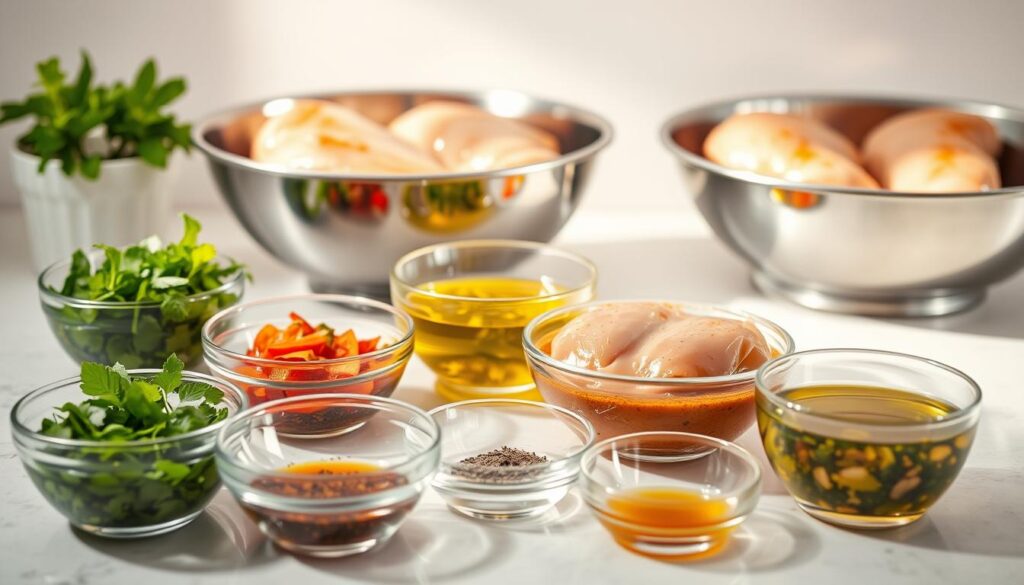
Basic Herb and Citrus Marinade
A simple yet effective marinade can be made with fresh herbs like parsley and rosemary, combined with citrus juice and a bit of olive oil. This marinade is perfect for those looking for a light and refreshing flavor. To make it, mix together chopped fresh herbs, lemon juice, garlic, salt, and olive oil.
Mediterranean-Style Marinade
For a more robust flavor, try a Mediterranean-style marinade featuring ingredients like oregano, lemon zest, and feta cheese. This marinade is great for those who enjoy bold, savory flavors. Combine oregano, lemon zest, garlic, feta cheese crumbles, and olive oil for a marinade that’s sure to impress.
Simple Garlic and Herb Marinade
A classic garlic and herb marinade is always a crowd-pleaser. Mix minced garlic with chopped fresh herbs like thyme and rosemary, then add olive oil and a pinch of salt. This marinade is perfect for those who love the rich flavors of garlic and herbs.
Marinating Times and Techniques
The key to a successful marinade is not just the ingredients, but also the marinating time. For most chicken breasts, a marinating time of 2-4 hours is sufficient. However, for more intense flavor, you can marinate overnight. Always marinate in the refrigerator to prevent bacterial growth.
Dry Rubs and Seasonings
Dry rubs and seasonings offer a simple yet effective way to transform your grilled chicken breast into a culinary masterpiece. By combining the right blend of spices and herbs, you can add depth and complexity to your grilled chicken without overpowering its natural flavor.
All-Purpose Chicken Rub
An all-purpose chicken rub is a versatile blend that can be used on various cuts of chicken. A typical mix includes paprika, garlic powder, onion powder, salt, and black pepper. This combination provides a balanced flavor that complements the chicken without overwhelming it.
Herb-Forward Seasoning Blends
For those who prefer a more herbaceous flavor, herb-forward seasoning blends are an excellent choice. These blends often feature thyme, rosemary, and oregano as primary ingredients, offering a fresh and aromatic taste to grilled chicken.
Spicy Options for Heat Lovers
If you like a bit of heat in your grilled chicken, consider using spicy dry rubs. These blends typically include cayenne pepper, chili powder, or red pepper flakes, adding a spicy kick to your chicken. You can adjust the level of heat to your liking by mixing and matching different spicy ingredients.
| Dry Rub Type | Primary Ingredients | Flavor Profile |
|---|---|---|
| All-Purpose | Paprika, garlic powder, onion powder | Balanced, savory |
| Herb-Forward | Thyme, rosemary, oregano | Fresh, aromatic |
| Spicy | Cayenne pepper, chili powder, red pepper flakes | Spicy, bold |
Step-by-Step Grilling Process
The key to a mouth-watering grilled chicken breast lies in understanding the step-by-step grilling process. Grilling chicken breast can be a straightforward task if you follow the right techniques.
Preparing Your Grill
Before you start grilling, it’s crucial to prepare your grill. Begin by cleaning the grates to remove any residue from previous uses. Use a grill brush to scrub the grates thoroughly, then wipe them down with a damp cloth. Next, preheat your grill to the desired temperature. For gas grills, this is typically done by turning the dial to the desired heat setting. For charcoal grills, you’ll need to light the charcoal and wait for it to ash over, indicating it’s ready for cooking.
Direct vs. Indirect Heat Methods
Understanding the difference between direct and indirect heat methods is vital for grilling chicken breast. Direct heat involves placing the chicken directly over the heat source, which is ideal for searing the outside. Indirect heat, on the other hand, involves cooking the chicken away from the direct heat, which is better for cooking the chicken through without burning the outside.
For chicken breast, a combination of both methods can be used. Start with direct heat to sear the chicken, then move it to indirect heat to finish cooking it through.
Flipping Techniques
Flipping the chicken breast is an essential step in achieving even cooking. It’s recommended to flip the chicken every 5-7 minutes to ensure that both sides are cooked evenly. Use tongs or a spatula to flip the chicken, as they provide a good grip and won’t pierce the meat.
Determining When Chicken is Done
The safest way to determine if your chicken breast is cooked is by using a meat thermometer. The internal temperature should reach 165°F (74°C). Insert the thermometer into the thickest part of the breast, avoiding any bones or fat.
Another method is to check for visual cues. A cooked chicken breast should be white and firm to the touch. If you cut into it, the juices should run clear.
| Grilling Method | Description | Best For |
|---|---|---|
| Direct Heat | Cooking directly over the heat source | Searing the outside of the chicken |
| Indirect Heat | Cooking away from the direct heat | Cooking the chicken through without burning |
| Combination | Using both direct and indirect heat | Achieving a perfectly cooked chicken breast |
Temperature Guidelines for Safe Chicken
When it comes to grilling chicken, temperature is king, and getting it right is essential for both flavor and safety. Ensuring that your chicken is cooked to a safe internal temperature is crucial to prevent foodborne illnesses.
Internal Temperature Targets
The USDA recommends cooking chicken to an internal temperature of at least 165°F (74°C). This ensures that harmful bacteria like Salmonella and Campylobacter are killed. It’s essential to use a food thermometer to check the internal temperature, especially when cooking thick chicken breasts.
Resting Time Importance
After grilling, it’s vital to let the chicken rest for a few minutes before serving. This allows the juices to redistribute, making the chicken more tender and juicy. Moreover, the temperature will continue to rise slightly during this resting period, ensuring that the chicken remains safe to eat.
Common Temperature Mistakes
One common mistake is not using a thermometer, relying instead on cooking time or visual cues, which can be unreliable. Another mistake is not letting the chicken rest, which can result in a less juicy final product.
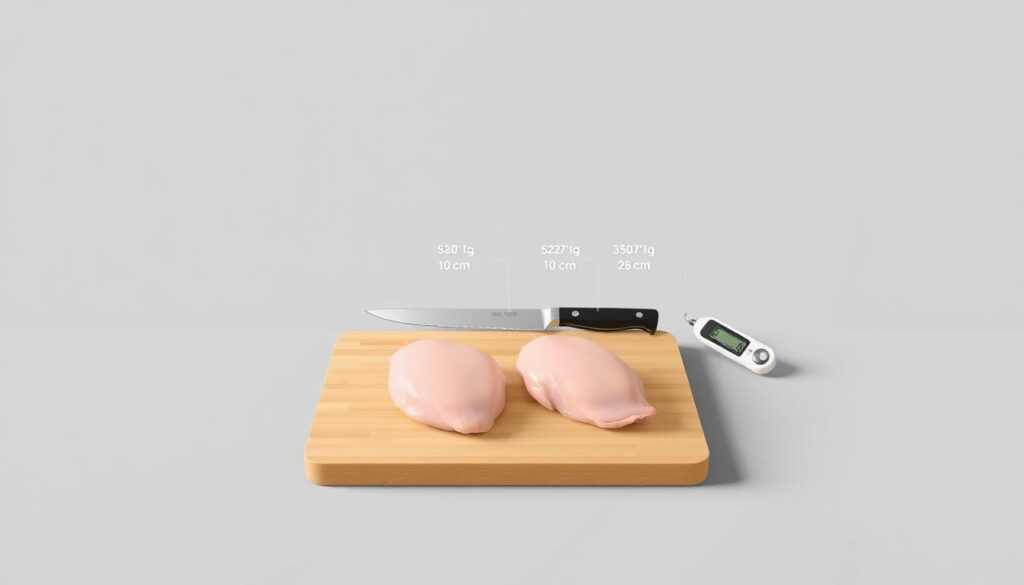
By following these temperature guidelines, you can ensure that your grilled chicken is not only delicious but also safe to eat.
Flavor Variations and Serving Ideas
Unleash your culinary creativity with our guide to different flavor variations and serving ideas for grilled chicken breast. Whether you’re looking to spice up your meal prep or impress your guests at a barbecue, we’ve got you covered.
International Flavor Profiles
Exploring international flavors can add a new dimension to your grilled chicken. For instance, a Korean-style BBQ marinade with Gochujang, soy sauce, and sesame oil can give your chicken a sweet and spicy kick. Alternatively, a Mexican-inspired seasoning with lime juice, cumin, and chili powder can transport your taste buds south of the border.
Side Dishes That Complement Grilled Chicken
The right side dishes can elevate your grilled chicken breast into a complete meal. Consider pairing it with a fresh salad, roasted vegetables, or grains like quinoa or couscous. Here’s a simple table to help you plan your meal:
| Side Dish | Description | Complementary Flavor |
|---|---|---|
| Roasted Asparagus | Asparagus roasted with olive oil, salt, and pepper | Lemon and garlic |
| Quinoa Salad | Quinoa mixed with cherry tomatoes, cucumber, and feta | Herbs like parsley and mint |
| Grilled Corn | Corn on the cob grilled with butter and herbs | Smoky and slightly charred |
Presentation Tips for Entertaining
When entertaining, the presentation of your grilled chicken can make a significant difference. Consider slicing your chicken breast against the grain and arranging it on a platter with your chosen sides. Garnishing with fresh herbs and a squeeze of lemon can add a pop of color and freshness.
By incorporating these flavor variations and serving ideas, you can turn a simple grilled chicken breast into a memorable meal that’s sure to impress your family and friends.
Storing and Reheating Grilled Chicken
Whether you’re meal prepping or saving leftovers, knowing how to store and reheat grilled chicken breast is a valuable skill. Proper storage and reheating techniques ensure that your grilled chicken remains safe to eat and retains its flavor and texture.
Proper Storage Methods
To keep your grilled chicken fresh, it’s crucial to store it correctly. Cool the chicken to room temperature within two hours of cooking, then refrigerate or freeze it. Use airtight containers or zip-top bags to prevent moisture and other flavors from affecting the chicken. When refrigerating, keep the chicken at 40°F (4°C) or below, and when freezing, maintain a temperature of 0°F (-18°C) or below.
Reheating Without Drying Out
Reheating grilled chicken requires care to prevent it from drying out. The best method is to reheat it gently, either in the oven or on the stovetop, using low heat. Adding a bit of liquid, such as chicken broth or water, can help maintain moisture. Avoid using the microwave if possible, as it can unevenly heat the chicken and make it rubbery. If you must use a microwave, cover the chicken and heat it in short intervals, checking until it’s warmed through.
Creative Ways to Use Leftover Grilled Chicken
Leftover grilled chicken can be repurposed into a variety of dishes. Consider shredding it for chicken salads or sandwiches, or slicing it thinly to add to wraps or pasta dishes. You can also use it in soups, stews, or as a topping for salads. The versatility of grilled chicken makes it a great ingredient for meal prep and creative cooking.
Conclusion
With the techniques and tips outlined in this article, you’re now equipped to achieve perfectly grilled chicken breast every time. By understanding the importance of cooking techniques and applying the right grilling tips, you can elevate your outdoor cooking experience.
A classic grilled chicken breast is a staple in many cuisines, and with the right guidance, you can create mouth-watering dishes that impress family and friends. Whether you’re a seasoned grill master or a beginner, the key to success lies in mastering the fundamentals of grilling, from selecting the best chicken breasts to employing the right grilling methods.
By incorporating the knowledge gained from this article, you’ll be confident in your ability to grill chicken breast to perfection, exploring various flavor profiles and serving ideas to keep your meals exciting and delicious.

